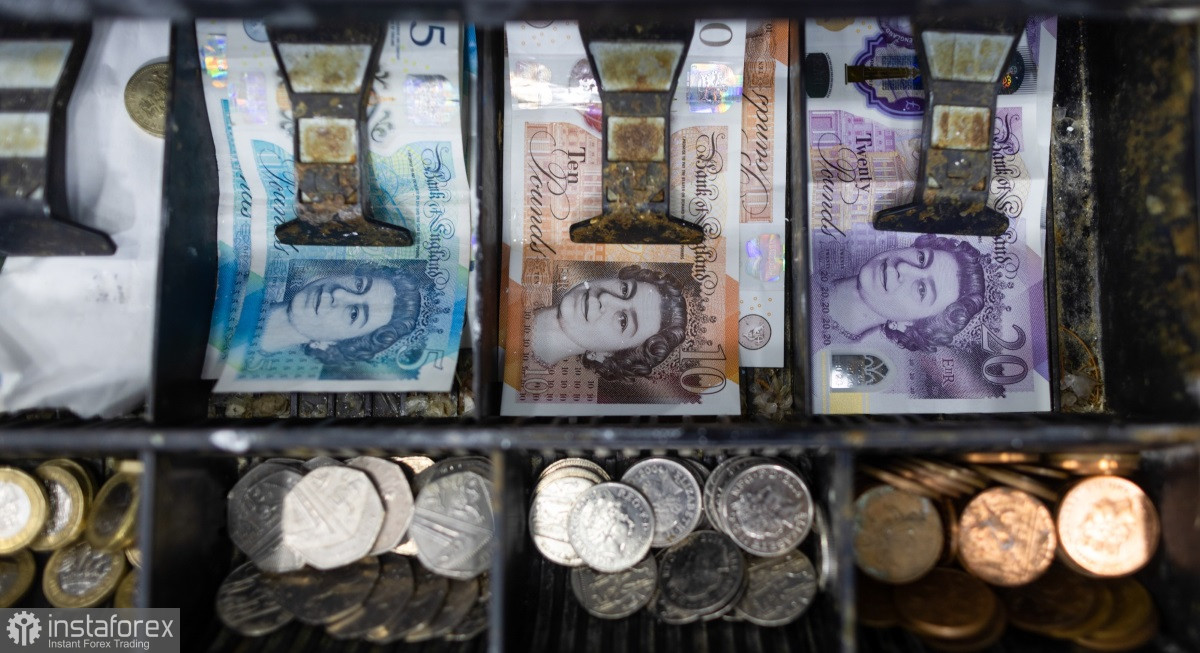The pound showed little reaction to the news that the U.K. maintained a steady recovery following last year's recession, providing Prime Minister Keir Starmer with a solid economic foundation in his quest to stimulate economic growth and stabilize public finances.
It's clear that pound buyers were hoping for much stronger results that could theoretically help them increase their long positions, but that didn't happen. According to the U.K. Office for National Statistics, gross domestic product (GDP) grew by 0.6% in the second quarter, following a 0.7% increase in the first three months of this year. The data fully met economists' expectations.
According to monthly data, GDP in June (when production growth was slowed by the election campaign, cool weather, and strikes in the National Health Service) stagnated. This serves as a warning after several months of economic recovery. The new UK Prime Minister may benefit from this success, but for that to happen, the economy must maintain high growth rates without fueling inflation.
It's worth noting that Starmer has promised to boost the UK's growth to 2.5%, aiming for the highest growth rate in the G7. These are ambitious promises for an economy that has been sluggish in recent years. Economists warn that the Labour government will need rapid growth if it is to provide sufficient funding to improve the crumbling public services.
Currently, the new government has begun implementing policies aimed at boosting economic growth, focusing on the recovery of real wage growth following the cost-of-living crisis, which coincided with the beginning of interest rate cuts by the Bank of England earlier this month.
Despite the government's efforts, many economists expect growth rates to slow in the second half of the year, as does the Bank of England, which anticipated GDP growth of 0.7% in the second quarter. Recently, Governor Andrew Bailey stated that the growth surge has not yet disrupted the fragile balance between supply and demand, but faster growth has increased the risks of an inflation spike by the end of the year.
Regarding the current technical outlook for GBP/USD, pound buyers need to overcome the nearest resistance at 1.2860. Only this will allow them to target 1.2890, above which it will be quite challenging to break through. The ultimate target is the 1.2910 level, with a potential surge towards 1.2940. In the event of a decline, the bears will try to regain control at 1.2820. If they succeed, breaking this range would deal a serious blow to the bulls' positions and push GBP/USD down to a minimum of 1.2780, with the potential to reach 1.2730.
Regarding the current technical outlook for EUR/USD, buyers now need to focus on overcoming the 1.1020 level. Only this will allow them to target a test of 1.1050. From there, they could aim for 1.1080, but doing so without support from major players will be quite challenging. The ultimate target is the maximum at 1.1110. In the event of a decline, I expect significant action from major buyers only around the 1.0985 level. If no one shows up there, it might be worth waiting for a retest of the 1.0950 low or opening long positions from 1.0910.
 English
English 
 Русский
Русский Bahasa Indonesia
Bahasa Indonesia Bahasa Malay
Bahasa Malay ไทย
ไทย Español
Español Deutsch
Deutsch Български
Български Français
Français Tiếng Việt
Tiếng Việt 中文
中文 বাংলা
বাংলা हिन्दी
हिन्दी Čeština
Čeština Українська
Українська Română
Română

